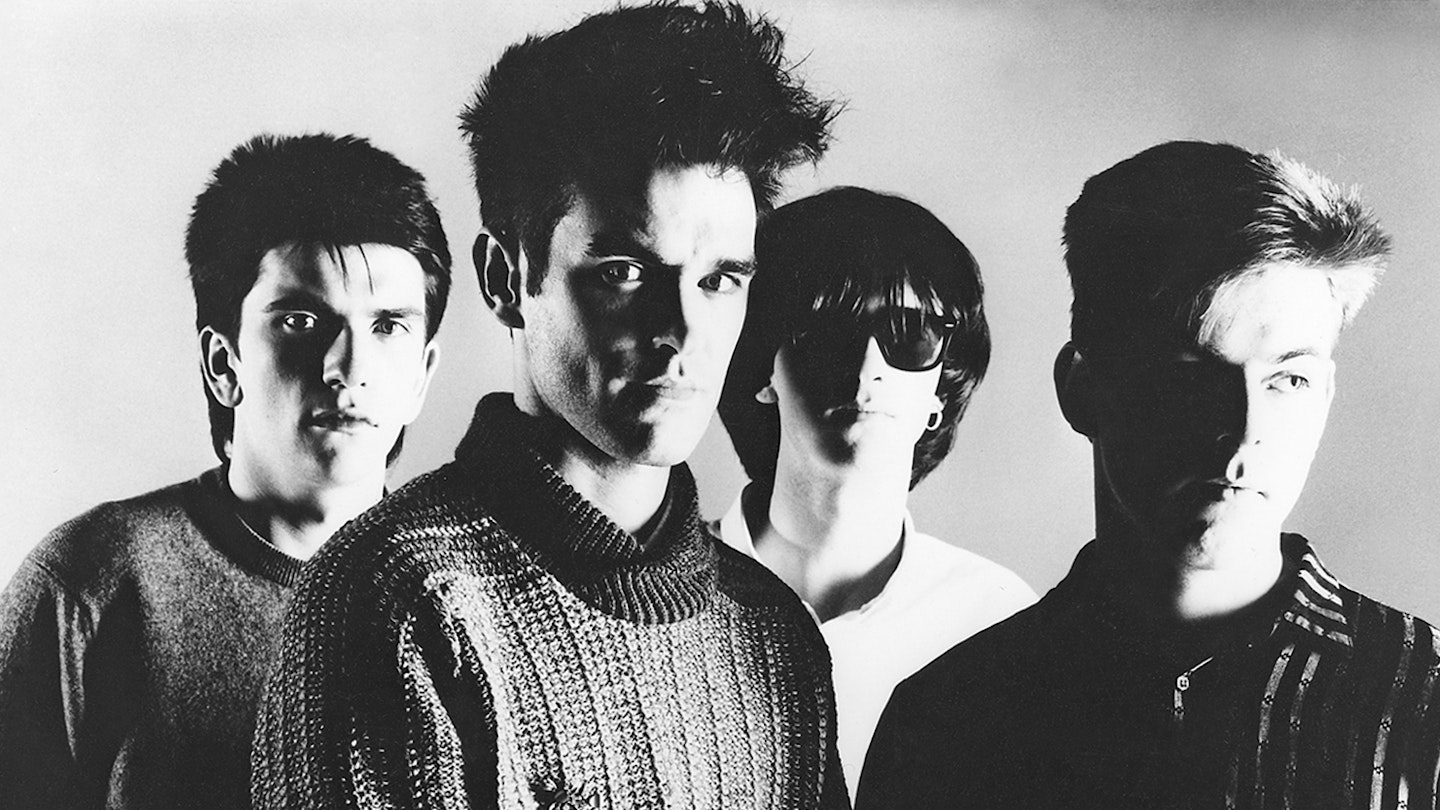40 years ago, The Smiths rebooted British guitar music. In the light of bassist Andy Rourke’s tragic passing, their timeless allow of ‘60s guitars and ‘80s dissent feels greater than ever, and – as new interviews with key players reveal – they were never more potent than in their vital first phase, 1982-84. In this extract from MOJO’s cover feature, Tom Doyle charts the birth of The Smiths, from Morrissey and Marr's chance meeting at a Patti Smith concert in 1978 to the band’s first rehearsal together. “We were all looking at each other, just going, ‘Fucking hell.’”
ON THURSDAY NOVEMBER 24, 1983, THE SMITHS MADE THEIR TOP OF THE POPS debut with This Charming Man. Incredibly, it had been a mere 13 months since the band had played their first show, on October 4, 1982, at The Ritz in Manchester, an event itself only five months after Steven Patrick Morrissey and John Martin Maher’s subsequently mythologised ‘first meeting’ at the Morrissey family home in Stretford.
But, in fact, they’d already met, in the foyer of the Manchester Apollo in August 1978, at a Patti Smith show, when Morrissey was 19 and Marr about to turn 15. “Johnny first shoved his face in,” the singer recalled, “and he said, ‘You’ve got a funny voice.’”
Regarded in Manchester as an eccentric outsider, aspiring author and music journalist, but certainly not a lead singer, Morrissey had already tried out as the frontman of punk band The Nosebleeds. Marr, a prodigious guitarist since his early teens, was to go on to form new wave outfit White Dice and then funkateers Freak Party.
But both, ultimately, were lost musical souls, who found one another after ex-Nosebleeds (and future The Cult) guitarist Billy Duffy showed Marr some lyrics that Morrissey had written. As characters, Morrissey and Marr were very different – the former shy and circumspect, the latter an outgoing enthusiast – but proved to be a perfect fit.
Flicking through the singer’s singles collection on the day of their May ’82 reacquaintance, the guitarist was delighted to find a 45 of The Marvelettes’ 1966 groover You’re The One. The first complete song they wrote together the day after, The Hand That Rocks The Cradle, borrowed the chords from Patti Smith’s Kimberly. From these and other seemingly disparate influences – Billy Fury, Marianne Faithfull, T. Rex, the New York Dolls – a unique musical form began to emerge.
MOJO Time Machine: The Smiths And Sandie Shaw Go Hand In Glove
Marr’s approach to the guitar – an attempt to transcribe all the elements of elaborate Tamla arrangements onto one instrument – accounted for much of it. “I’d try to cover the strings, piano and anything else with my right hand,” he explained, “trying to play the whole record on six strings.”
I liked the idea of us being a band that were saying things for the gay community.
Johnny Marr
However, the pair’s first recording, made on Marr’s TEAC Portastudio, was inauspicious. I Want A Boy For My Birthday, a 1963 B-side by female US R&B trio The Cookies, was covered in hushed and uncertain Velvet Underground ballad style. Original Smiths bassist Dale Hibbert, who played on this exploratory track, later claimed that “Johnny and Steven told me they had plans to launch themselves as a ‘gay band’.”
“A lot of my mates were gay guys who liked rock music,” Marr would say later. “I liked the idea of us being a band that were saying things for the gay community.”
Like-minded musicians were difficult to find. Simon Wolstencroft, Marr’s drummer friend from Freak Party, played on the group’s first professional demo (recorded at Decibel Studios in Manchester in the summer of ’82), but baulked when asked to accompany Morrissey singing Suffer Little Children, his lament for the victims of the Moors murders.
“As soon as he came in on the first verse going, ‘Over the moor, take me to the moor,’ it grated with me,” Wolstencroft recalled in his 2014 book, You Can Drum But You Can’t Hide. “I didn’t get it, whatsoever. I was just thinking, This is depressing.”
The final line-up of The Smiths fell together almost randomly – punky drummer Mike Joyce auditioned while spaced on magic mushrooms; Marr’s Freak Party bassist pal Andy Rourke found Morrissey quiet and strange and was wary. But as soon as the four first played together, rattling through the garagey Handsome Devil, they began grinning with delight at the noise they were making.
“The Smiths were a gang. A very tight band of brothers…” Andy Rourke Interviewed
“It was like it wasn’t me playing the bass… it was like I was possessed,” Rourke later enthused. “The energy was just there, and it was right. And we were all looking at each other, just going, ‘Fucking hell.’”
“It’s a fantastic truth and a profound irony,” Marr noted, “that the very first thing The Smiths did when they first got together was to start laughing uncontrollably.”
“My brother came up to Manchester just when we started rehearsing at Crazy Face,” Joyce tells MOJO today. “He said, ‘What kind of music is it? Funk? Punk… folk… rock?’ [I said], I don’t know. I can’t describe it.”
“We were right band in the centre of the ‘80s, but we didn’t belong in the 80s…” READ THE FEATURE IN FULL
The latest issue of MOJO is on sale now! Featuring The Smiths, Bob Marley, Gram Parsons, Sinéad O’Connor and more. More info and to order a copy HERE

